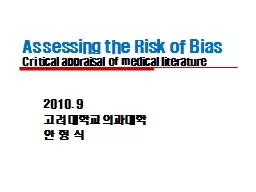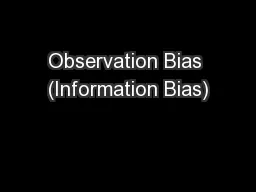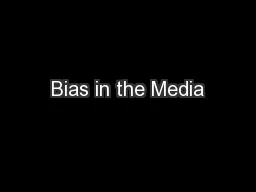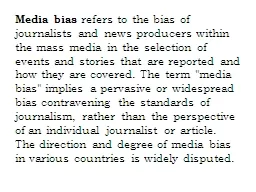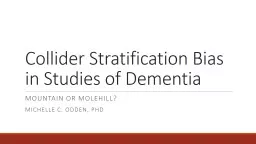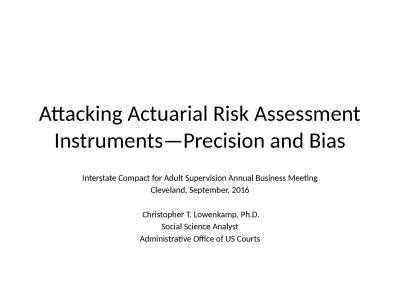PPT-Assessing the Risk of Bias
Author : nersonvisa | Published Date : 2020-06-16
Critical appraisal of medical literature 2010 9 고려대학교 의과대학 안 형 식 What is bias Systematic error or deviation from the truth may overestimate
Presentation Embed Code
Download Presentation
Download Presentation The PPT/PDF document "Assessing the Risk of Bias" is the property of its rightful owner. Permission is granted to download and print the materials on this website for personal, non-commercial use only, and to display it on your personal computer provided you do not modify the materials and that you retain all copyright notices contained in the materials. By downloading content from our website, you accept the terms of this agreement.
Assessing the Risk of Bias: Transcript
Download Rules Of Document
"Assessing the Risk of Bias"The content belongs to its owner. You may download and print it for personal use, without modification, and keep all copyright notices. By downloading, you agree to these terms.
Related Documents

